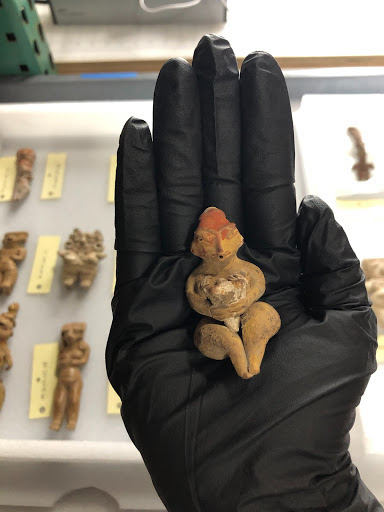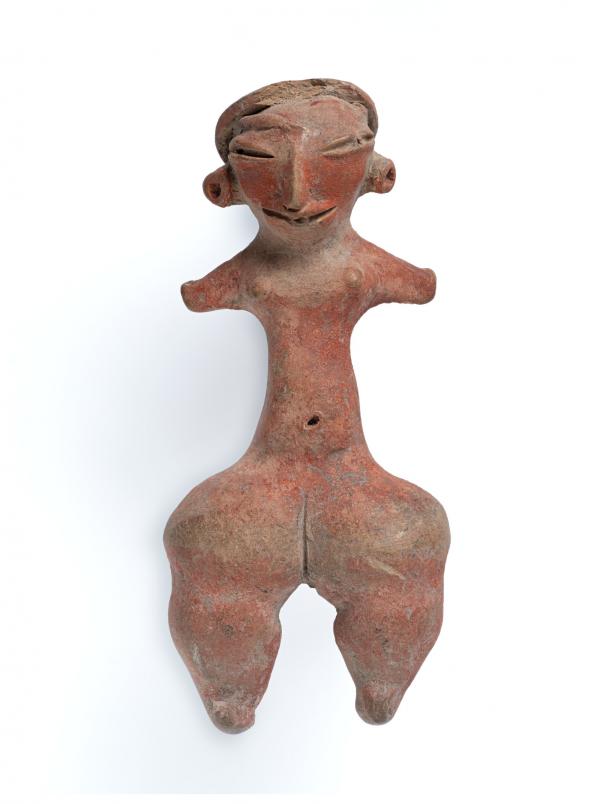LACMA's Art of the Ancient Americas department has partnered with the Department of Anthropology at California State University, Dominguez Hills to offer internships to CSUDH students. The program provides an opportunity for students to learn practical curatorial skills and gain hands-on experience in collections-based research while shadowing LACMA staff. Our inaugural cohort of interns began work in LACMA's off-site storage facilities at the beginning of the spring semester, but the program was interrupted by the COVID-19 pandemic. Our interns went digital, meeting virtually and researching the permanent collection using LACMA's digital resources. This series of blog posts and StoryMaps showcases what our first cohort of CSUDH-LACMA Anthropology Interns has accomplished. Be sure to read the work of our other interns: Sarahi Vargas's post for Unframed, "Dancing Through Time," Katherine Gendron's StoryMap, "Art of the Ancient Ones," and Yesenia Rubi Landa's StoryMap "The Many Lives of Artifacts."
Last semester I had the privilege of being one of the CSUDH-LACMA Spring 2020 interns, working alongside LACMA's staff at their off-site facilities. We had the opportunity to work with exciting new photogrammetry technology to create high-resolution 3D models of artifacts from LACMA's Art of the Ancient Americas collection. On the first official day of the internship, I was stoked to see several interesting figurines from Tlatilco, Central Mexico. My studies are in Mesoamerican archaeology with a focus on Central Mexico, which made me all the more excited to work with these exceptional pieces. During our limited-time at the facility, before switching to a remote internship due to COVID-19, we practiced curating methods designed to avoid damaging these fragile objects. We also conducted research to better understand this significant culture and the amazing items made by exceptionally skilled artisans.
Tlatilco, which is the Nahuatl word for "place of hidden things," is an Early Formative period (c. 1200–900 BCE) Mesoamerican site located in the western Valley of Mexico. It consists of three small villages and an extensive cemetery. In the early 20th century, the site was discovered by local miners and instantly attained recognition for its sophisticated archaeological materials. Tlatilco is known for its funerary practices, ceramic vessels, and figurines, most of which date to the site's apogee during the Early Formative period. Tlatilco's pottery vessels include a wide range of types, including animal effigies and many composite and inventive shapes. There are several similarities between Tlatilco materials and those of the Olmec archaeological culture located along the Gulf Coast of Mexico. For instance, a figurine known as "the Acrobat," found in the Tlatilco cemetery among other grave goods, exhibits a theme common in both Olmec and West Mexican art—acrobatic skill and yoga-like poses. Other examples of Tlatilco's Olmec affinities include figurines with wide-open mouths and the common "pretty lady" motif, which I will discuss later. This suggests a strong relationship between these two groups and the diverse cultures characterizing the Formative period in Mesoamerica.

The intricate artifact above is a ceramic figurine of a sitting female with her hands wrapped around a dog. I nicknamed it "Dog Lady." Many artifacts include dogs, suggesting that animals, especially dogs, held important significance to the people of Tlatilco. To me, the prevalence of canines in these artifacts can be taken as early evidence for the idea that "a dog is a (wo)man's best friend." Female figurines also depict pregnant women and women with children. Tlatilco's sculptures show a reverence for bonding, nurturing, and fertility—traits associated predominantly with women. I am a dog lady myself, which is why this artifact instantly resonated with me. Looking closer at the way the lady holds the dog, her hands are wrapped around the animal in an almost protective way, evoking the idea that dogs were important additions to prehispanic households. Tlatilco's artisans made figurines solely by hand, mastering shaping and pinching techniques to create these elaborate pieces without the use of molds. The extraordinary precision it takes to sculpt motifs and fine details in such a small amount of space—most figures are only up to 15 cm tall—reveals the talent and skill held by the people of Tlatilco.
View and manipulate the 3D model of "Dog Lady" below!




_4.jpg)